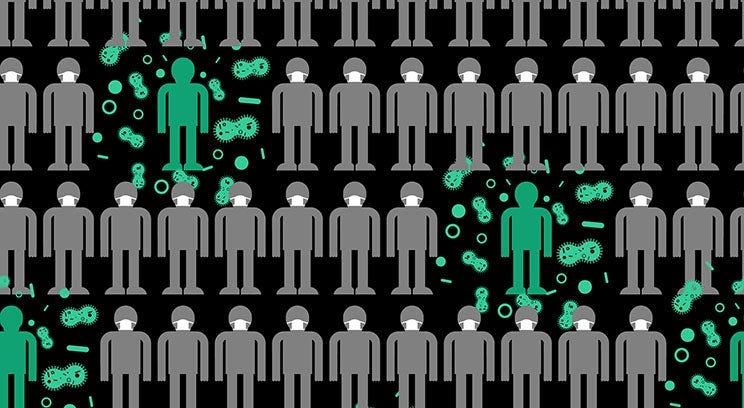
As companies and their insurers brace themselves for a likely onslaught of personal injury lawsuits claiming that plaintiffs contracted COVID-19 due to companies’ supposed negligence, lessons from the past can help guide risk management decisions and the defense of these lawsuits. As Mark Twain purportedly once said, “History does not repeat, but it does rhyme.”
COVID-19 is not the first disease outbreak to generate tort litigation. Lessons from past cases may well prove to be the best guide as we try to judge risk and exposure of personal injury lawsuits arising from coronavirus infections. This is particularly important as companies struggle to decide when and how to reopen, and as companies and their insurers try to assess reserves and underwriting of the novel risk of the coronavirus.
Below are six historical lessons from a dozen prior infectious disease cases.
Lesson 1 – Causation is king
Prior infectious disease cases demonstrate that the first and foremost issue is causation, which usually has two key elements.
First, did the plaintiff contract the disease at the defendant’s location? Stated differently, can the plaintiff show, based upon reliable evidence, that he or she more likely than not contracted the disease on the defendant’s premises?
For example, during the H1N1 influenza outbreak, a husband sued a hospital where his deceased wife had worked, alleging she contracted influenza in the hospital, causing her death. Summary judgment was affirmed on appeal in favor of the hospital, as the plaintiff’s expert could only speculate that the decedent contracted influenza at the hospital versus in the community at large.
In another example, a guest alleged that he contracted the waterborne bacterium aeromonas hydrophila at a pool at the defendant’s hotel. Summary judgment was affirmed on appeal for the hotel as the plaintiff’s expert’s opinion on causation lacked adequate foundation. See also Coming Attractions Bridal & Formal, Inc. v. Tex. Health Res., where without an expert to opine on causation, a store could not sue a hospital whose nurse allegedly brought Ebola to the store.
[Related: 7 Steps for Coronavirus Litigation Preparedness]
However, in other cases, courts have found that plaintiffs have provided sufficient evidence of causation to get in front of a jury. For example, in a case where the plaintiff alleged that he contracted Legionnaires’ Disease at a vacation resort, a federal district court denied the resort’s motion for summary judgment finding, among other things, that he had established sufficient evidence of causation to be entitled to a jury trial.
See also Hernandez v. Estate of Charles W. Hopkins, where although causation was a hotly contested issue at trial, the plaintiff had sufficient expert evidence to support a large jury award in an HIV infection case.
The second question is whether the defendant’s actions caused the plaintiff to contract the infectious disease, which often boils down to whether different personal protective equipment or training would have actually prevented the plaintiff from having contracted the disease.
[Related: An Overview of the PREP Act’s Liability Immunity for Products Meant to Counter COVID-19]
For example, in Tex. Health Res. v. Pham, a nurse sued a hospital system for whom she worked when she contracted Ebola from a patient in the hospital. An appellate court found the nurse had not provided sufficient evidence of causation because she failed to show that “she would not have contracted Ebola had [the hospital system] adopted different policies and procedures, provided her with different training, or provided her with different personal protective equipment.”
Lesson 2 – Verify the plaintiff had COVID-19
An important albeit obvious question, related to causation, is whether the plaintiff even had the disease at issue. This issue has arisen in prior infectious disease litigation, and it will likely be an issue in many COVID-19 cases.
For example, in a lawsuit alleging a cruise ship passenger contracted the norovirus, summary judgment was granted in favor of the cruise ship operator because the plaintiff didn’t actually prove she contracted the norovirus.
Lesson 3 – The assumption of the risk
Interestingly, there are almost no infectious disease cases that address assumption of the risk. In fact, the few infectious disease cases that involve the defense of assumption of the risk tend to involve sexually transmitted diseases.
Nevertheless, one of the key defenses (after causation) for companies in COVID-19 premises liability and negligence litigation is whether, and to what degree, the plaintiff assumed the risk that he or she might contract COVID-19.
Much of the case law involving prior infectious diseases were based upon outbreaks much more limited in scope and scale compared to COVID-19. As the risks of COVID-19 are universally known, and methods of limiting exposure are largely known, when people go to a company’s premises or facilities, they know they are taking a risk. Accordingly, the assumption of the risk defense may play a greater role in COVID-19 litigation.
Lesson 4 – Warnings and precautions lower exposure in litigation
Cases from prior disease outbreaks show that preventative measures and warnings can be helpful in defending lawsuits. For example, after a store was shuttered by health authorities when a nurse with Ebola visited the store in the aforementioned Coming Attractions case, it was unable to get past summary judgment in its lawsuit against the hospital where the nurse worked, as the store did not show that the hospital departed from the appropriate healthcare-provider standards of care.
For another example, although a railroad worker contracted West Nile virus from mosquito bites at work, absent a showing that the railroad attracted the mosquitos to the property or knew of an unreasonable risk from the mosquitos and then neither mitigated nor warned, the plaintiff could not prevail.
[Related: The Anatomy and Effect of Force Majeure Clauses]
In Delva v. MSC Crociere S.A., a US federal district court dismissed a plaintiff’s complaint alleging he contracted bacterial meningitis on a cruise ship, as the complaint did not sufficiently allege the negligence of the cruise ship.
On the other hand, a guest at a resort was entitled not only to regular damages, but also punitive damages, as he showed that the resort had knowledge of an outbreak of E. coli, yet failed to act.
Lesson 5 – Don’t ignore non-COVID-19 dangers
An important risk management lesson during a national pandemic is to make sure not to let the pandemic lull the company into ignoring the myriad of non-COVID-19 risks. In fact, preventative measures for COVID-19 can create risks of other diseases and injuries.
This issue is well illustrated in a case arising from one of the worst pandemics in US history: the 1918 Influenza Pandemic, aka the Spanish Flu. In a decision a century ago, the defendant railroad kept windows open in its railroad station and railroad cars for ventilation to prevent the spread of influenza.
[Related: Vaccine R&D and Economic Impact of COVID-19 Pandemic]
A passenger caught a severe cold due to the open windows. A state high court affirmed a verdict for the passenger, finding that keeping the windows open to prevent the transmission of influenza was not a sufficient reason to not light fires to heat the station and railroad car to offset the open windows.
Lesson 6 – Beware of big damages
While the foregoing cases provide a helpful guide on defending lawsuits for the contraction of infectious diseases, it is worth noting the warning some of them impart. In several cases, juries assessed large compensatory awards and/or punitive damages when they thought the company defendant wasn’t properly protecting its guests.
For example, in the aforementioned Hernandez v. Estate of Hopkins, a jury awarded a janitor US$1 million for contracting HIV from accidentally pricking himself on a tainted needle that the doctor did not properly dispose of.
[Related: Protecting Continuity, Workforce, and Physical Assets During the Pandemic]
After an outbreak of Legionnaires’ disease on a Celebrity Cruise ship, the infected passengers filed a class-action lawsuit against the cruise line as well as the company that manufactured the whirlpool spa filters, where the bacteria was found. The jury awarded the plaintiffs a multi-million dollar verdict.
Similarly, in Joachim v. Crater Lake Lodge, Inc.,a plaintiff received punitive damages for catching E. Coli at a Crater Lake National Park resort, which failed to properly chlorinate its water.
So, while there will be many strong defenses in COVID-19 cases, there will also unfortunately be significant risks of large verdicts.
Conclusion
There are a lot of open questions on how courts and juries will view COVID-19 personal injury lawsuits. Nevertheless, the cases reviewed in this article provide historical precedent to help you manage your risk and defend COVID-19 personal injury litigation.





